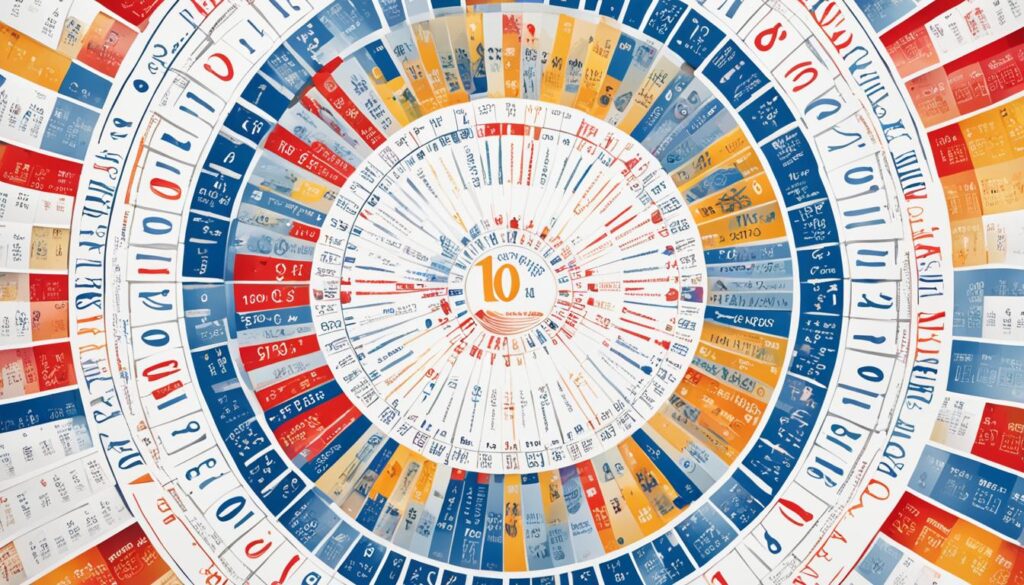The French Revolution changed many parts of life, including how we keep time. From 1793 to 1805, France used the French Revolutionary Calendar. This calendar was a big change, aiming to create a new way to measure time.
This calendar was made to remove old royal and religious influences. It had 12 months, each with 30 days, and was divided into three 10-day weeks called décades. This was a big change from the usual seven-day week.
The calendar was part of a bigger plan to make life more logical and scientific. It was linked with other changes like decimal time, money, and the metric system. These changes showed the ideals of the French Revolution.
Key Takeaways
- The French Revolutionary Calendar was used from 1793 to 1805
- It replaced the Gregorian calendar to eliminate religious influences
- The calendar had 12 months of 30 days each
- Weeks were 10 days long, called décades
- It was part of a larger decimalisation effort in France
- The calendar began on September 22, 1792
- It symbolized a break from the old regime and its traditions
The Birth of the French Revolutionary Calendar

The French Revolutionary Calendar started in the Enlightenment era with big cultural changes. Gilbert Romme led a team to create a new way to keep time, replacing the old Gregorian calendar. This team had mathematicians, astronomers, and poets who aimed to change French society.
Fabre d’Églantine, a poet, named the months after France’s climate and farming cycles. This calendar honored the Republic and the age of reason, not old religious ways. It was a big step towards decimalisation, fitting the revolutionary mood of the time.
The French government made this new calendar official on October 24, 1793. They went back to September 22, 1792, as its start date, marking the First French Republic’s beginning. It was used in official records all over France and in parts of Belgium, Luxembourg, and the Netherlands.
This new way of keeping time spread to other places too. Parts of Germany, Switzerland, Malta, and Italy also took it up. The calendar’s use showed how big an impact France’s cultural changes had during that time.
Structure and Design of the French Revolutionary Calendar
The French Revolutionary Calendar introduced a new way to keep time during the Republican Era. It had 12 months, each lasting 30 days. These months were split into three 10-day weeks, known as décades. The tenth day, décadi, became the new rest day, replacing Sunday.
This calendar used decimal time, like the metric system. Each day was divided into 10 hours, each hour into 100 minutes, and each minute into 100 seconds. This made timekeeping simpler and moved away from old methods.
Years in this calendar started on September 22, 1792, marking the beginning of the First Republic. They were written in Roman numerals. The calendar also had five or six complementary days at the year’s end, called Sansculottides. A four-year period ending with a leap day was named a “Franciade.”
This calendar had similarities with the Ancient Egyptian calendar. Both started their year on the autumnal equinox. This shows how the French Revolution drew inspiration from history while introducing new ideas.

Leave a Reply